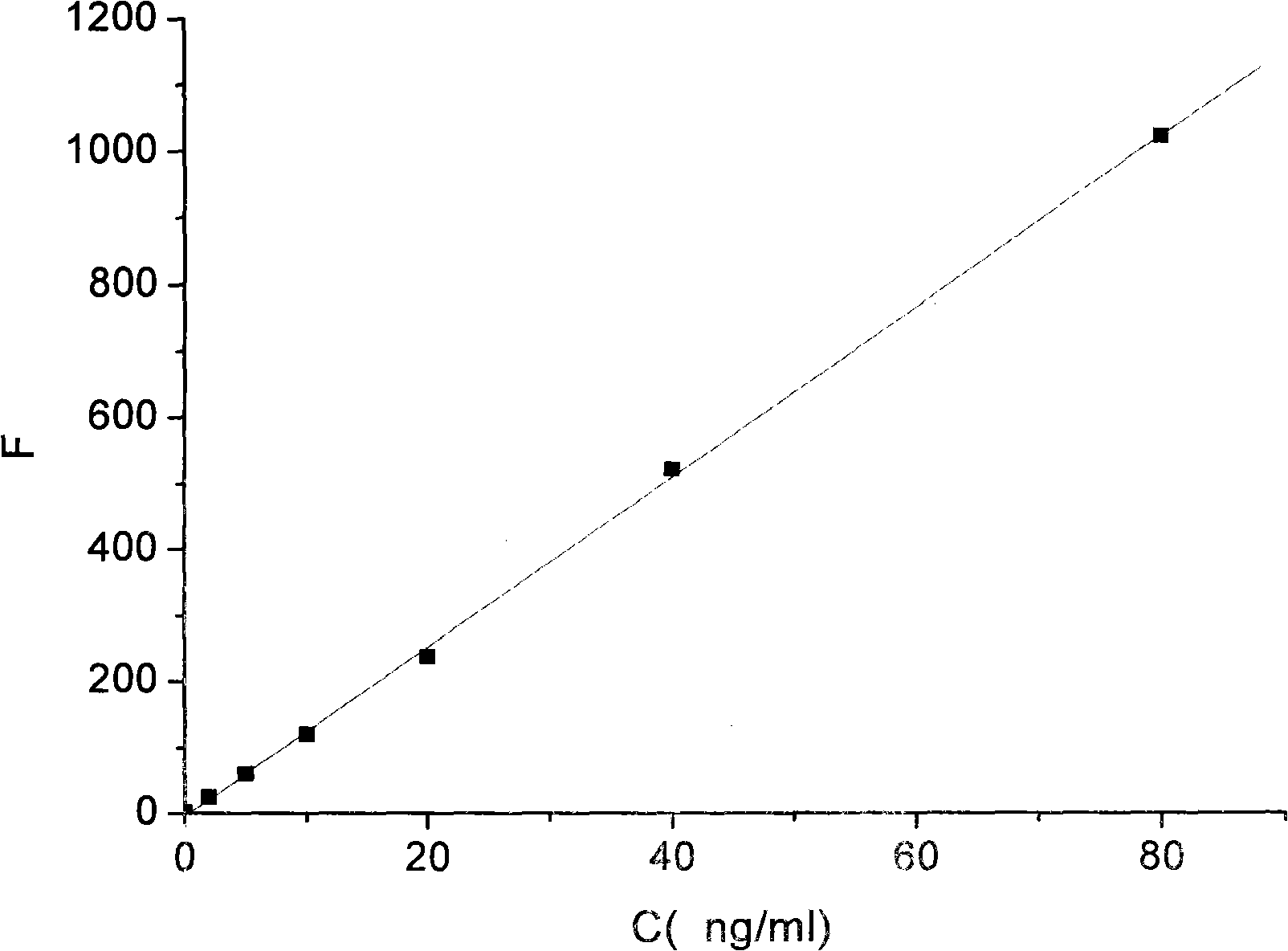Detection method for rapidly measuring micro trace quantity tin in ship hull steel by atomic fluorescence spectrometry
A rapid measurement technology of atomic fluorescence spectroscopy, which is applied in the field of special steel detection, can solve the problems of unapplicable and non-measurement of hull steel, etc.
- Summary
- Abstract
- Description
- Claims
- Application Information
AI Technical Summary
Problems solved by technology
Method used
Image
Examples
Embodiment 1
[0078] Weigh 0.1019g of the actual sample into a 100ml beaker, add 10ml of concentrated HCL, heat and dissolve on a hot plate, then add 2ml of concentrated HNO3, continue heating to a slight boiling state, evaporate until 1-2mL remains, remove and cool, Transfer to a 25ml volumetric flask, and dilute to the mark with 2% HCL. At the same time, make a sample blank. Under the working conditions selected by the instrument, measure the fluorescence intensity values of the blank, tin standard solution and sample respectively.
[0079] The test conditions are: negative high voltage 330V lamp current 90mA atomization height 6mm carrier gas flow 400ml / min shielding gas flow 600ml / min potassium borohydride 2% tartaric acid 5%, thiourea and ascorbic acid 0.8%.
Embodiment 2
[0081] Weigh 0.1050g of the actual sample into a 100ml beaker, add 10ml of concentrated HCL, heat and dissolve on a hot plate, then add 2ml of concentrated HNO3, continue heating to a slight boiling state, evaporate until 1-2mL is left, then remove and cool. Transfer to a 25ml volumetric flask, and dilute to the mark with 3% HCL. At the same time, make a sample blank. Under the working conditions selected by the instrument, measure the fluorescence intensity values of the blank, tin standard solution and sample respectively.
[0082] The test conditions are: negative high voltage 370V lamp current 50mA atomization height 8mm carrier gas flow 600ml / min shielding gas flow 900ml / min potassium borohydride 3.5% tartaric acid 3%, thiourea and ascorbic acid 2%.
Embodiment 3
[0084] Weigh 0.0990g of the real sample into a 100ml beaker, add 10ml of concentrated HCL, heat and dissolve on a hot plate, then add 2ml of concentrated HNO3, continue heating to a slight boiling state, evaporate until 1-2mL is left, remove and cool, Transfer to a 25ml volumetric flask, and dilute to the mark with 5% HCL. At the same time, make a sample blank. Under the working conditions selected by the instrument, measure the fluorescence intensity values of the blank, tin standard solution and sample respectively.
[0085] The test conditions are: negative high voltage 360V lamp current 70mA atomization height 7mm carrier gas flow 500ml / min shielding gas flow 700ml / min potassium borohydride 3% tartaric acid 4%, thiourea and ascorbic acid 1%.
PUM
 Login to View More
Login to View More Abstract
Description
Claims
Application Information
 Login to View More
Login to View More - R&D
- Intellectual Property
- Life Sciences
- Materials
- Tech Scout
- Unparalleled Data Quality
- Higher Quality Content
- 60% Fewer Hallucinations
Browse by: Latest US Patents, China's latest patents, Technical Efficacy Thesaurus, Application Domain, Technology Topic, Popular Technical Reports.
© 2025 PatSnap. All rights reserved.Legal|Privacy policy|Modern Slavery Act Transparency Statement|Sitemap|About US| Contact US: help@patsnap.com



